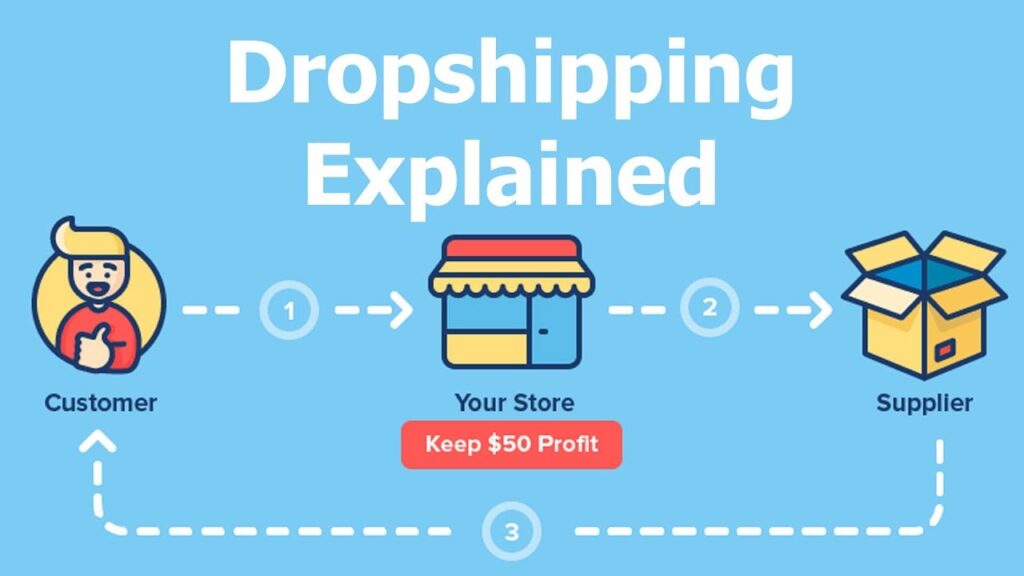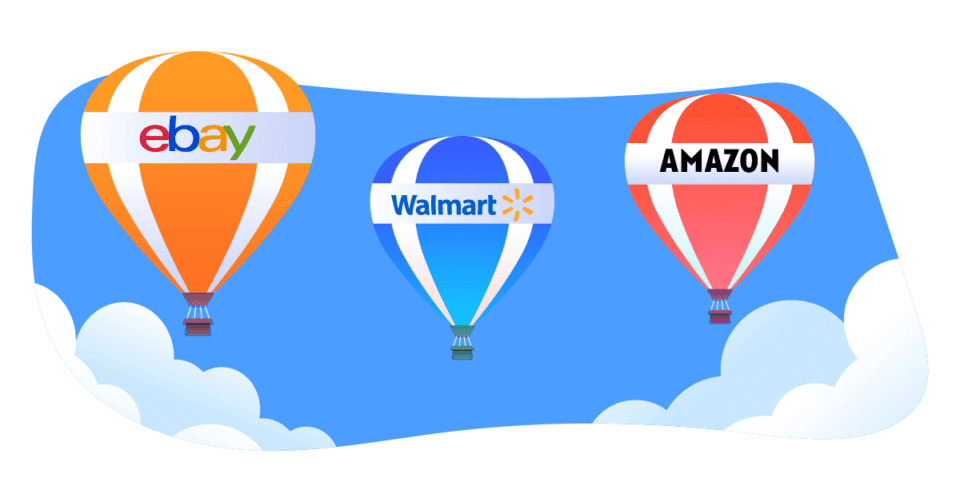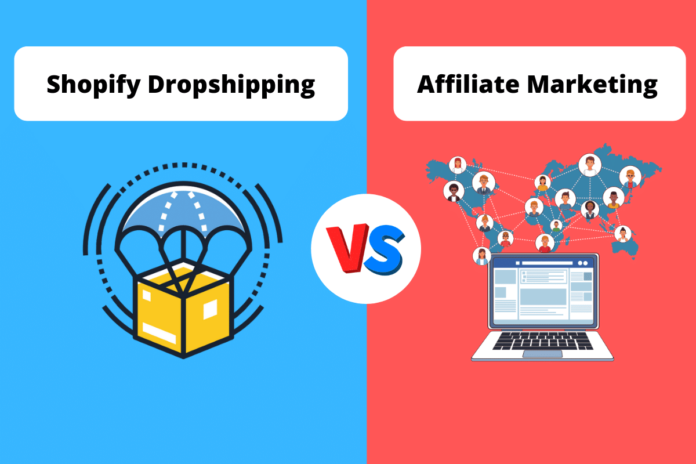Affiliate marketing vs Dropshipping. Which business model should you undertake?
I spoke at length about affiliate marketing in my previous blog, explaining what this particular type of business entailed. The blog covers what affiliate marketing means, labels its characteristics, its possible pros, and pitfalls, the possible mediums that are to be adopted. Multiple settlements are arranged between the affiliate marketing business and affiliate program.
It also outlines how affiliate marketers earn a passive income by acquiring affiliate partners. The formation of affiliate networks and their implications. You can refer to the blog for more information on affiliate-marketing.
Here, the focus will be on understanding what a dropshipping business is and its operations. The way a dropshipping business conducts its activities, its major players, dropshipping suppliers to target, the positives and negatives of such a business, its possible applications, and real examples of people and companies utilizing this line of work.
We have already covered affiliate channels such as YouTube videos and Pinterest affiliate marketing in the previous blog.
Then we will emphasize affiliate marketing vs dropshipping. A comparison will be drawn based on the operations of both business models.
What is Dropshipping?

Before we probe into the debate of affiliate marketing vs dropshipping, we must first zero in on the meaning of dropshipping.
Dropshipping is a mechanism that allows for outsourcing storage, procurement, and shipping of products to external parties. It is often termed as an order fulfillment method, where the ecommerce store does not stock up on the items that it sells. The ordered products are instead directly purchased via third-party wholesalers or manufacturers.
How does the Dropshipping Business Model Work?
The existence of dropshipping necessitates a combination of factors to be at play. Firstly, the supplier, who can either be a manufacturer or wholesaler, sources and produces the commodity. Then, there should be an agreement regarding the roles of the dropshipping supplier and the dropshipper.
Suppliers are responsible for storing the stock or inventory. The dropshipper will maintain their presence through hosting an online store, which will display the items that they are confident in selling.
When the customer places an order through the drop shipper’s website, the drop shipper then has to process the payment and check whether they have received the money online. They will then forward the order to the supplier or the dropshipping service. The service will then prepare those products. After which, they will get shipped to the customer.
The Major Players in Dropshipping
The first player will be the Seller of Record (SoL). This player is most commonly known as the dropshipper. The dropshipper will sell the goods to the end consumer via an online marketplace. This business is also accountable for pricing product listings on their own website, calculating sales tax, and recording purchases as revenue. They are the ones who make and keep track of the dropshipping store. They are also in charge of accommodating excellent customer service and promotion.
The second player in this business model is the maker or producer of the products. They manufacture the goods to sell them to retailers and wholesalers. Some of them can offer direct dropshipping products services. To avail discounts from them, you may need to buy in bulk. However, a dropshipping business may not be able to place large-scale orders, especially after launch.
The third key player in a dropshipping business is the wholesaler. These act as middlemen between producers and retailers. They tend to buy in large quantities and sell to an individual customer while fixing a mark up to establish profit margins. They may also provide dropshipping services.
How do drop shippers earn?
Their websites are the easiest method to discover how dropshippers pay their costs and create profit margins. When using sites such as Alibaba.com or AliExpress.com, shoppers can avail discounts by ordering at bulk quantities and bundles. They can also at times offer prices at wholesale or cost price rates. The drop shipper then sells each product to individual consumers. They can afford to charge a higher price this way.
The Merits of Dropshipping
There are plenty of dropshipping pros to consider.
First of all, it costs less to start a dropshipping business in comparison to other businesses. For instance, a lot of money is allocated to inventory in other firms. In addition, the dropshipper has the choice to only buy the product once its order has been confirmed. The dropshipper will also be able to avoid any mishaps related to owning physical sites.
Moreover, there are comparatively lesser factors to look out for. Dropshippers have barely any concerns regarding warehousing. They don’t handle refunds or returns. As mentioned previously, they save the money used on inventory by other companies. The supplier cares for packaging and shipment. There will reduce the need for tracking of stock.
The dropshipper is more likely to enjoy decreased overheads. Many people use the space in their homes for storage, thus they save money by avoiding additional rent.
Another huge advantage that dropshippers enjoy is found by operating at a flexible location. This is why many small businesses can start trading through this forum. This is why most people who are advocates of dropshipping argue that they can run their business from anywhere they want.
The dropshipper can also dabble with selling a mixed basket of goods and services. Since they do not need to be bought beforehand, the dropshipper can list them as soon as the dropshipping service makes them available for pick up.
This kind of business model can also be treated as a prelaunch beta before commencing full-scale operations. Here, the dropshipping business can take calculated risks, such as introducing a fresh product line and testing the waters for potential customers of new niches.
Drawbacks of Dropshipping
As with the benefits, there are some dropshipping cons to look out for. First and foremost, you must know that you will not be able to be in control of a lot of aspects that revolve around your business.
As a dropshipper, you must carefully study which products to provide to your customer. Once you enter this market, you can’t choose to serve the mass market as wholesalers and other retailers will always offer similar, if not a more comprehensive, range of commodities.
So, you must look to identify a niche and target those types of customers accordingly. The dropshipper will often have to settle for smaller margins initially.
Nobody wants to endure a Price War!
The dropshipper might have to compete on the basis of lower cost per unit and distinguish themselves through alternative strategies, such as competitive pricing. Price wars are conundrums that no one wants to be actively involved in. It has been previously used as a means for established market leaders like Pepsi to drive foes out of the market and defeats the purpose of trying to resell something for a profit.
There can be frequent changes in levels of inventory. Since consumer tastes vary with trends, it can get tricky to alter your product portfolio.
This lack of control also extends to the supply chain. For example, what if you need to procure goods from separate drop shipping service companies. This will make the shipping costs rise. You will either have to bear this cost yourself or carry it forward and make the customer pay the additional charges.
Your success and profit-making will vastly depend on the manufacturers and wholesalers you trade with. As for missing items, delays or late deliveries will leave a bad taste in the customers’ mouths.
As a dropshipper, customers will sometimes hold you accountable for these unfortunate events. This, without a doubt, will present an unpleasant customer experience.
Furthermore, it is not easy to build a brand in this field. Since you have little to no control over your products’ look, packaging, quality, or design, it can become difficult to convince people that your dropshipping store offers unique items compared to competitors.
The prerequisites to building a Dropshipping Store Front
So what do we need to obtain before delving into such a business venture? The launch of such an entity will mandate some prerequisites.
Let us start with the pre-existence of an online store. This is often made through the use of website builders and ecommerce platforms. Examples can include WordPress, Wix, or Weebly.
The aim should be to build an interactive website that displays all the products that the dropshipper can seamlessly provide. For instance, a Shopify store. Take advantage of themes and tools to customize your website and stand out from your competitors.
According to Shopify.com, this will cost you about $29 per month.
Your Domain!
The next thing you will be required to have is a domain name. You can perform this activity on website builders as well. Ideally, it would be best to aim for an online address that would be more likely to get recalled and generate some well-needed traffic. The name and address should aid recall. Preferably something that ends with a .com.
According to Shopify.com, this would cost between $5-$20 per year.
Test Run
The dropshipper would then test the efficiency of their whole procedure. From a potential customer browsing the items on their online website to the placement of orders, payment processing, and finally, the delivery of the product. How smoothly does the entire system work?
The dropshippers will initially put up those products on their website that they will be confident in selling. So let’s say they aim to sell sports goods and equipment, they will add a few units of footballs and complementary goods used in the sport.
So suppose if the sales figures indicated a potential gap in this market during the test run, the dropshipper would probably look to expand their product portfolio. They might add goal post and nets, goalkeeper gloves, shin pads, football boots, air pumps, cones, even kits, and jerseys. Once the full launch is underway. The cost of order testing is subjective to each entrepreneur.
The dropshipper will then try to increase the awareness of their existence to a potential audience. Online advertising can achieve such a feat. This could be acquired through social media, displays on popular sites with optimum traffic like Google, as well as the deployment of mobile adverts. One critical tool that dropshippers can look up to here is search engine marketing (SFM).
Dropshipping Service Providers
There are quite a few service providers or suppliers of dropshipping. The most well-known include AliExpess.com, which AliBaba.com owns. SaleHoo, Worldwide Brands, Megagoods, Wholssale2B, National Dropshippers, Wholesale Central, Doba, Inventory Source, and Sunrise Wholesale. (business.adobe.com)Other popular channels are eBay, Amazon, and Walmart.
Walmart Dropshipping

Dropshippers who have endeavored in Walmart products have claimed that it has resulted in success. The question is, how does Walmart dropshipping work, and is it any different from other mediums?
According to oberlo.com, Walmart offers a few distinct advantages. A registration fee is not required. The only referral fee is to be paid upon making a sale. As expected, there will be many products to choose from. So, as long as your item is not judged unsafe, you’ll find what you want.
Moreover, shipping is more convenient as they can accommodate next-day deliveries for urgent orders. This will help dropshippers from losing clients to other corporations that can do the same.
As expected, there will be a range of products to choose from.
But, you’ll have to satisfy them by adhering to their strict guidelines.
Real Dropshipping Firms
Warmly is one such example of a successful dropshipping establishment. This company concentrates on providing home accessories and lighting equipment. They accumulate traffic from their Pinterest as well as their website. They claim to offer furniture and home décor at awesome prices.
The second example is Bluecrate. They take orders for the customized gifts niche. Their main source of promotion comes through video adverts on their Facebook page. They offer their customer base to gift peculiar items to one another. This can include picture screenshots and other designs on items like mugs, portraits, masks, and cushions. (dodropshipping.com)
Affiliate Marketing vs Dropshipping
What comparison can we draw from the two business models?
The commonalities between Affiliate Marketing & Dropshipping
Let’s first analyze the similarities. Both of these take up an online presence. Their means of making money levies on the performance of their websites. How reliable they seem to first-time and repeated customers. They compete based on attracting traffic, as identified through tools like SEO (search engine optimization) and SEM.
Moreover, they both specialize in selling goods manufactured by third parties. An affiliate marketer and a dropshipper are lured to such trades on account of lower start-up and operational costs. For instance, you don’t have to pay rent in either.
The two business forms also seemingly thrive in niche markets. An affiliate marketing business ideally chooses those products that the promoter has some involvement in. They promote a handful of products via an affiliate link and seek an affiliate program that would entice their viewer base. It should be somewhat related to the content of the affiliate marketer, or they should have substantial knowledge of the good.
This is because, for dropshippers, it won’t be wise to compete in mass products that other enterprises will have an absolute advantage over. Instead, such organizations will aim to compete in those categories of products that they can specialize in or hold a relative advantage in. Customization is key.
They both can choose to conduct promotions through their own website or other online platforms.
Dissimilarities between Affiliate Marketing & Dropshipping (Affiliate Marketing vs Dropshipping)

However, there are quite a few differences between dropshipping and affiliate marketing.
Do they make a passive income or take up a more active role in each sale? Let’s break it down a little.
Affiliate marketing corporations stress on earning money in free time or while dedicating their focus to another activity. They will usually earn a commission on a sale made by their affiliate program.
Reaching agreements with affiliate partners can be a time-consuming process to go through, especially as a new company.
So, suppose a person clicks on an affiliate link or coupon link provided by the affiliate marketing business on its website or several other media channels. In that case, it will direct them to the landing pages of the affiliate partners. The company will then rely on any sale made through that link.
The sold product doesn’t have to be the exact same as that on the affiliate’s website. Any sale made through the link would generate a commission. This will depend on the conversion rates enjoyed. An affiliate marketing firm takes no ownership over the product itself.
Passive vs Active Income
On the other hand, a dropshipping store exercises a bit more control of the sales they make. They don’t earn as a percentage of the authorized sales of the dropshipping service providers. They aim to profit from selling the goods that they momentarily own.
Additionally, the role of the two businesses can vary when it comes to shipment. To speak frankly, neither of them have full ownership or control when shipping the confirmed orders to the final customers.
But, dropshippers take the authority to ensure that the purchased item reaches its destination in the desired time frame. They can track the transportation of these goods.
An affiliate marketing business has no such responsibility. Affiliate Marketers’ contributions will end once they post links that direct people to the landing pages and receive the money.
Furthermore, affiliate marketers center their campaigns around the personalized content they produce. Through mediums, such as a YouTube channel and try selling the products that they can openly talk about or relate to some or most people of their audience.
Dropshippers do not really produce independent content just to promote the products, instead, they focus their energy on increasing awareness around their website for consumers to browse and pay directly through their stores.
Learn more about 12-different-income-streams-with-a-blog
Affiliate Marketing vs Dropshipping
So, when taking the decision of affiliate marketing vs drop shipping, a lot depends on your own competencies and capabilities. Whether you want to earn passively, or how much workload is you willing to take on. In what ways do you want to associate yourself with the products you are selling. All these factors will come into play for you to decide what would work best for you.


